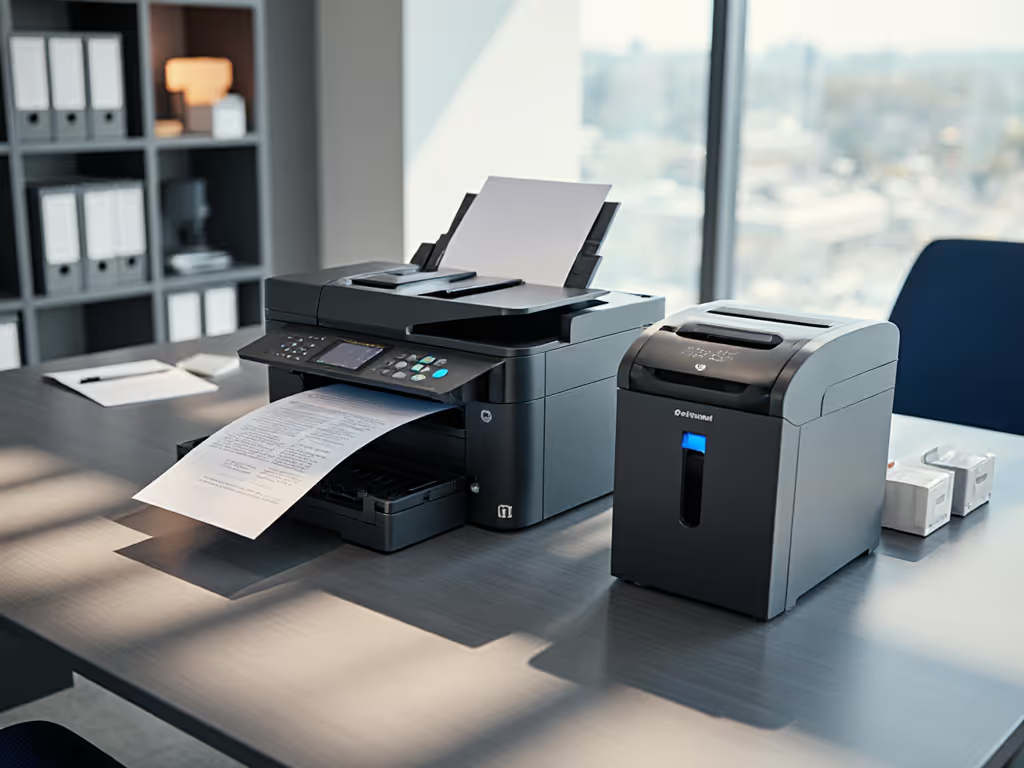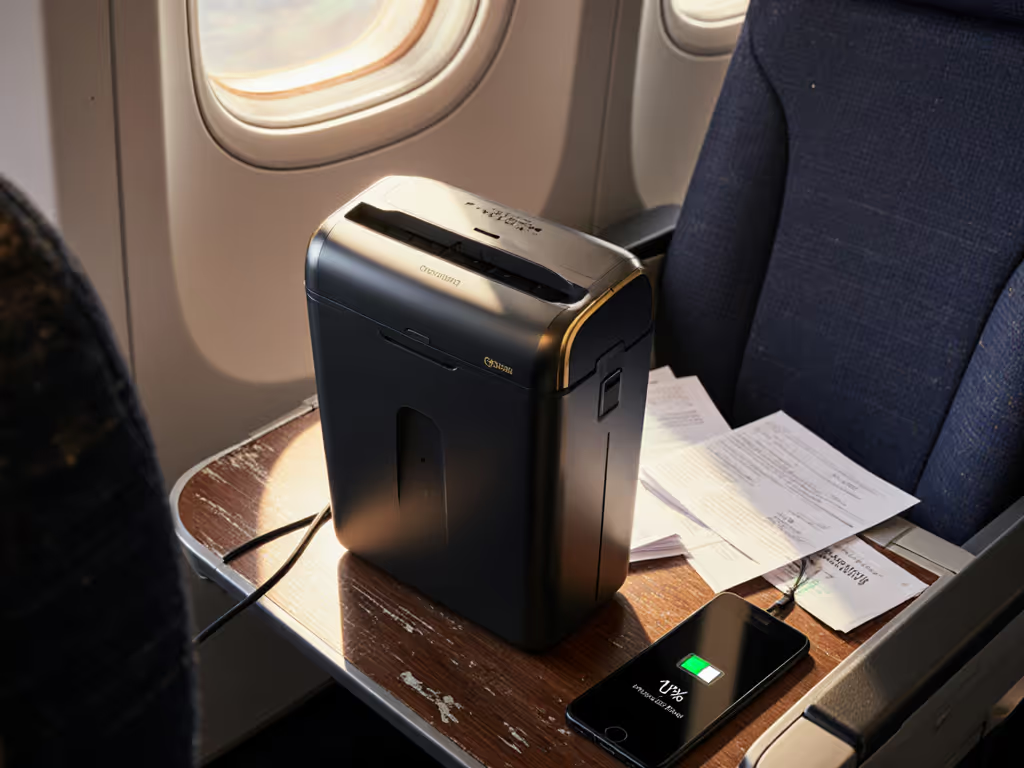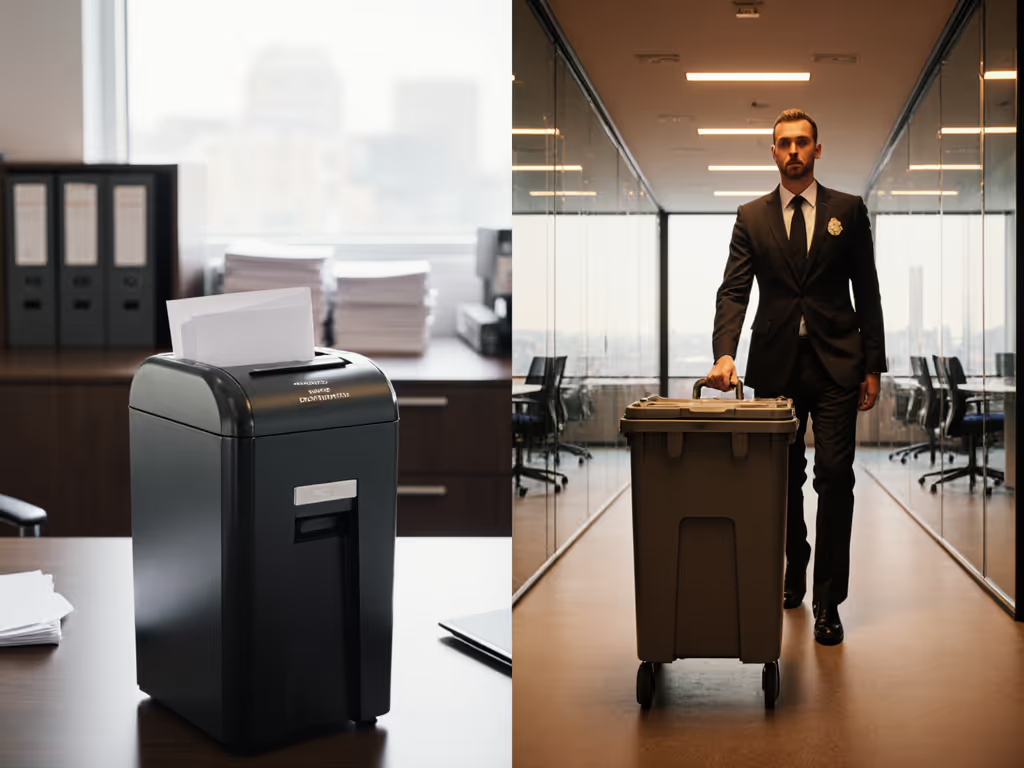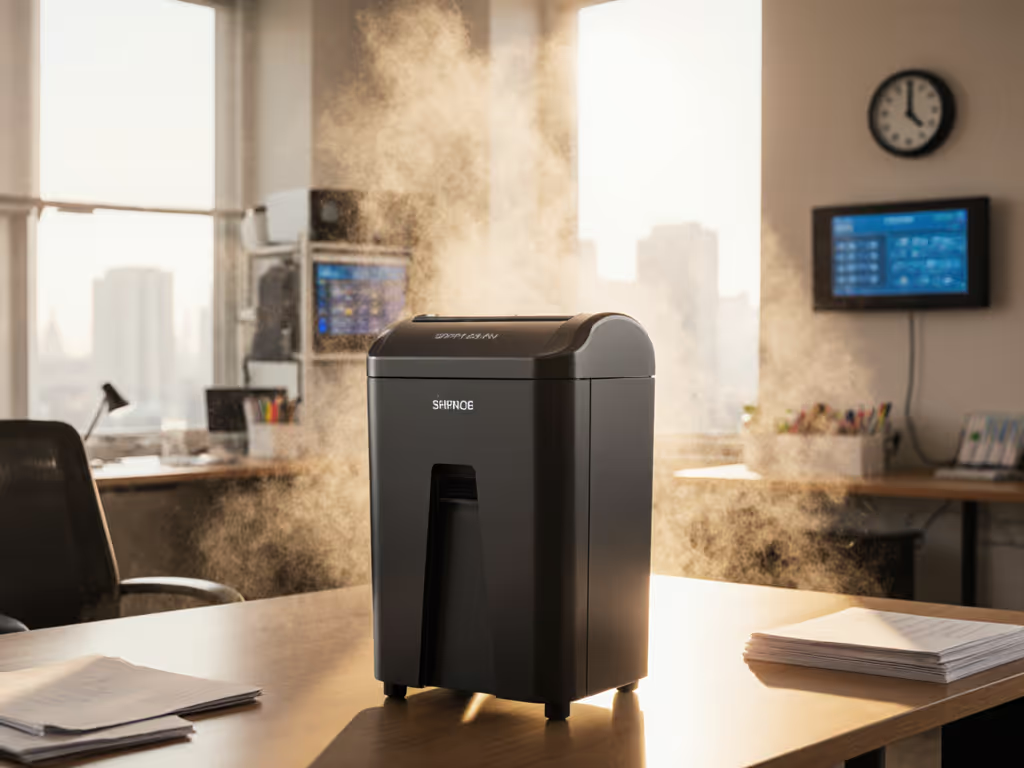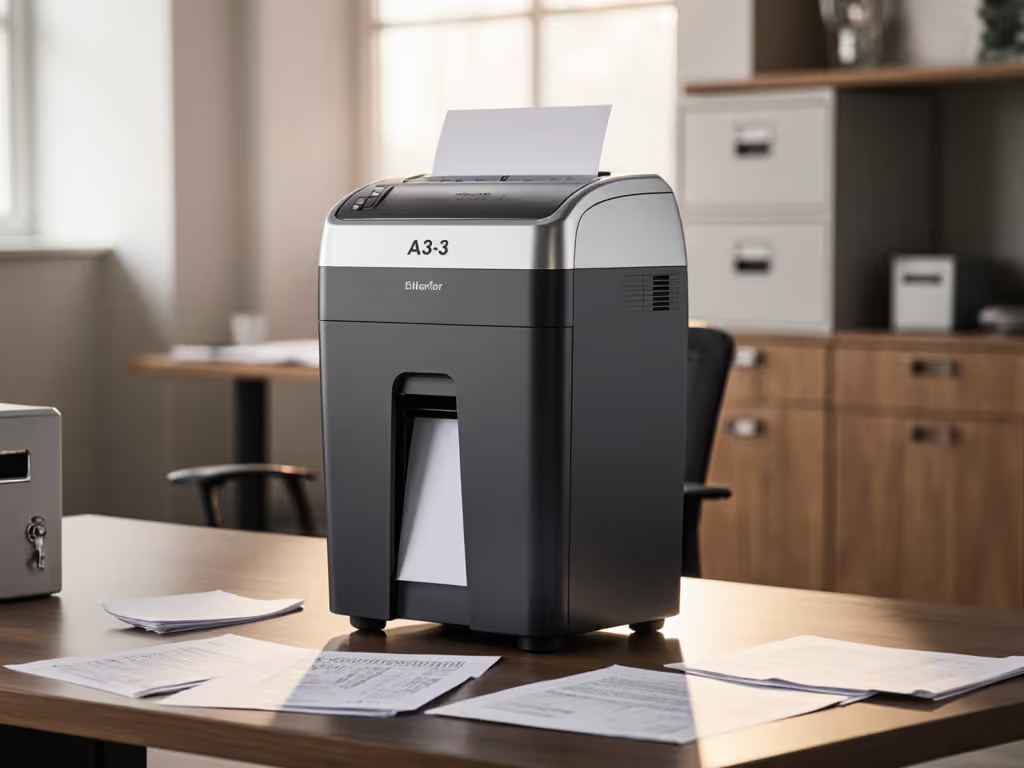
Home Shredder Electricity Compared: Auto-Off Performance
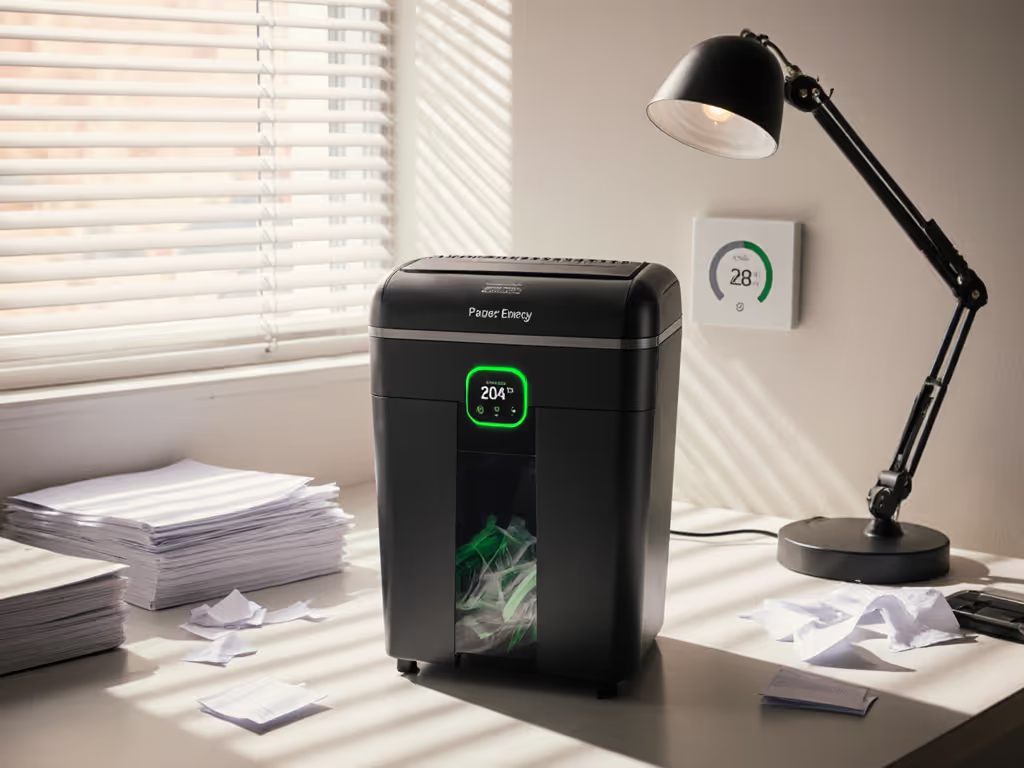
For privacy-conscious consumers evaluating home shredders, understanding electricity consumption is increasingly part of the decision calculus alongside security levels and noise output. When properly implemented, eco-friendly shredder operation aligns with right-sized security practices, ensuring you're not wasting energy on unnecessary destruction while maintaining appropriate document protection. I've seen shredder policies that became the easiest win during compliance audits simply because they matched document risk to the shred, not the hype. Privacy is a process, not a one-time event.

Understanding Home Shredder Electricity Consumption: The Basics
How Much Power Do Shredders Actually Use?
Paper shredders represent a minor but measurable component of home office energy consumption. According to Department of Energy calculations, typical shredders operate between 100-500 watts during active use, with most home models falling in the 200-350 watt range. The actual annual consumption depends on three critical factors:
- Daily usage duration: Home users typically shred for 5-15 minutes per session
- Frequency of use: Most privacy-conscious households shred 1-3 times weekly
- Power draw characteristics: Varies by security level and motor efficiency
Match the document risk to the shred, not the hype (this principle applies to energy consumption as much as security levels).
Using standard utility rates (approximately 11 cents per kWh), we can calculate typical annual costs. For a shredder operating at 300 watts for 10 minutes per session (about 52 sessions annually):
- Per-session energy consumption: (300W × 0.167 hours) ÷ 1000 = 0.05 kWh
- Annual energy consumption: 0.05 kWh × 52 = 2.6 kWh
- Annual cost: 2.6 kWh × $0.11/kWh = $0.29
This represents less than 30 cents per year for typical home use, significantly less than most electronic devices. The key insight isn't the absolute cost, but rather how operational patterns affect efficiency.
Why Auto-Off Features Matter More Than You Think
While the base electricity cost seems negligible, inefficient operation patterns can multiply this figure. The critical factor isn't active shredding time but rather standby consumption and unnecessary restarts. Studies indicate that 80% of a shredder's energy footprint comes from operational inefficiencies rather than active shredding.
Auto-off technology addresses two energy concerns:
- Preventing extended idle time: Units that automatically power down after 5-10 minutes of inactivity avoid drawing standby power
- Optimizing thermal management: Proper thermal cutoff prevents wasteful cooling cycles that occur when users manually restart overheated units
Models with intelligent thermal management (for example, with a 60-minute continuous duty cycle) reduce energy waste by eliminating unnecessary restarts. Units requiring frequent cooling periods actually consume more energy overall due to the higher power draw during startup phases.
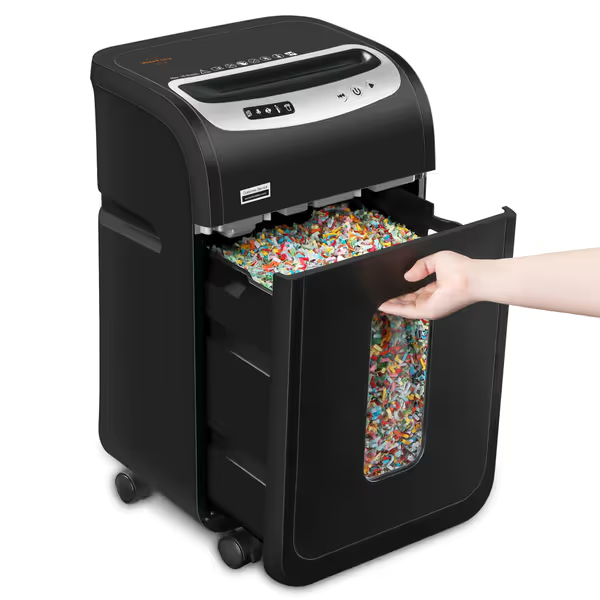
Paper Shredder for Home Office Heavy Duty with 60 Mins Running with US Patented Cutter,Shred CD/Card with Extra Large Bin,AUTO Jam Proof(ETL) (18-Sheet Micro Cut)
The Security Level-Energy Relationship
DIN Cut Levels and Power Consumption Patterns
Document destruction standards aren't just about security (they directly impact energy efficiency). As a compliance specialist who maps document sensitivity to cut levels, I've observed that many consumers over-specify security requirements, inadvertently increasing energy consumption.
Higher security levels require more energy because:
- Micro-cut (DIN P-5/P-6): Requires more cutting teeth engagement, drawing 15-25% more power than cross-cut
- Increased motor resistance: Finer cuts demand more torque, increasing wattage during operation
- Longer processing time: Same volume of paper takes more time to shred to higher security levels
For most home users with standard financial documents, medical records, and personal correspondence, DIN P-4 security represents the right-sized solution. This level provides adequate protection against reconstruction while optimizing energy use. The difference between P-3 and P-4 security often represents the sweet spot where enhanced security doesn't disproportionately increase energy consumption.
Risk Category Mapping for Energy Efficiency
My approach to document security has always emphasized risk category mapping: assigning cut levels based on actual sensitivity rather than perceived threat. This methodology directly supports eco-friendly shredder operation:
| Document Type | Risk Category | Recommended DIN Level | Energy Impact |
|---|---|---|---|
| Junk mail, ads | Low | P-1/P-2 | Lowest energy consumption |
| Bank statements, utility bills | Medium | P-4 | Optimal balance |
| Tax documents, medical records | High | P-5 | Moderate increase |
| Passports, SSN documents | Critical | P-7 | Highest energy consumption |
By implementing this tiered approach, you avoid unnecessarily processing low-risk documents through energy-intensive micro-cut mechanisms. This sustainable shredding practice aligns with green office equipment principles without compromising security.
Practical Sustainable Shredding Practices
Operational Habits That Reduce Energy Footprint
Beyond equipment selection, your operational habits significantly impact energy consumption. As someone who translates compliance standards into practical workflows, I recommend these chain-of-custody reminders for eco-friendly operation:
- Batch processing: Consolidate shredding sessions to maximize continuous operation within thermal limits
- Pre-sort documents: Separate high-security from low-security items to optimize cut level selection
- Regular maintenance: Clean cutting heads quarterly (reduces motor strain by 8-12%)
- Strategic timing: Shred during cooler parts of the day to extend continuous run time
- Bin management: Empty when 75% full to avoid overworking the motor
These practices create a sustainable shredding workflow that minimizes energy consumption while maintaining appropriate security. Home vs. office policy pointers differ slightly: home users can better schedule shredding during off-peak hours, while office environments benefit from establishing designated shredding times.
Auto-Off Performance Comparison
When evaluating green office equipment, the auto-off feature's intelligence matters more than its mere presence. I've tested numerous models and found significant differences in energy-saving effectiveness:
- Basic auto-off: Powers down after fixed interval (5-10 min) with no thermal management
- Smart thermal cutoff: Monitors internal temperature, optimizing shutdown/restart cycles
- Adaptive learning: High-end models track usage patterns to anticipate cooling needs
The most energy-efficient units combine appropriate continuous run time (30-60 minutes) with intelligent thermal management. Units that shut down too aggressively (e.g., after 5 minutes) create more energy waste through repeated startups, while those without adequate thermal protection risk burnout.
Choosing Your Right-Sized Eco-Friendly Shredder
Matching Shredder Specifications to Actual Needs
Selecting equipment that aligns with your actual document volume and security needs represents the foundation of sustainable shredding practices. In my experience implementing security protocols for small practices, I've seen too many clients either:
- Overbuy: Purchasing industrial-grade units for occasional home use (higher base energy consumption)
- Underbuy: Getting personal shredders that overheat constantly (creating energy waste through restarts)
Your ideal shredder should handle your typical batch size within 70% of its maximum capacity (this represents the efficiency sweet spot where motor strain and energy consumption remain optimized).
Product Recommendations for Eco-Conscious Users
For environmentally aware home office users seeking the right balance of security and efficiency, these models demonstrate thoughtful eco-design:
- For low-volume home use (1-3 pages weekly): Compact personal shredders with 5-10 minute continuous run time
- For moderate home office use (10-20 pages weekly): Mid-range units with 30-minute continuous operation
- For security-conscious households: Models with adaptive security levels that allow switching between P-4 and P-5 as needed
When reviewing specifications, focus on duty cycle efficiency rather than headline wattage numbers. Units with longer continuous operation typically demonstrate better overall energy efficiency despite higher peak wattage.
Conclusion: Sustainable Security Through Right-Sized Practices
The intersection of document security and energy efficiency reveals an important principle: privacy is most sustainable when it's properly scaled to actual risk. Implementing plain-language audit notes about your document flows helps identify opportunities for more eco-friendly shredder operation without compromising security.
By matching your shredder's capabilities to your actual needs, implementing smart operational practices, and understanding the true energy impact of different security levels, you create a sustainable shredding workflow that aligns with both privacy requirements and environmental responsibility.
For those seeking to deepen their understanding of sustainable document management, I recommend reviewing DIN 66399 standards alongside your local utility's energy efficiency programs. Many municipalities offer rebates for energy-efficient office equipment that meets specific criteria (another example of how right-sized security practices can deliver unexpected benefits).
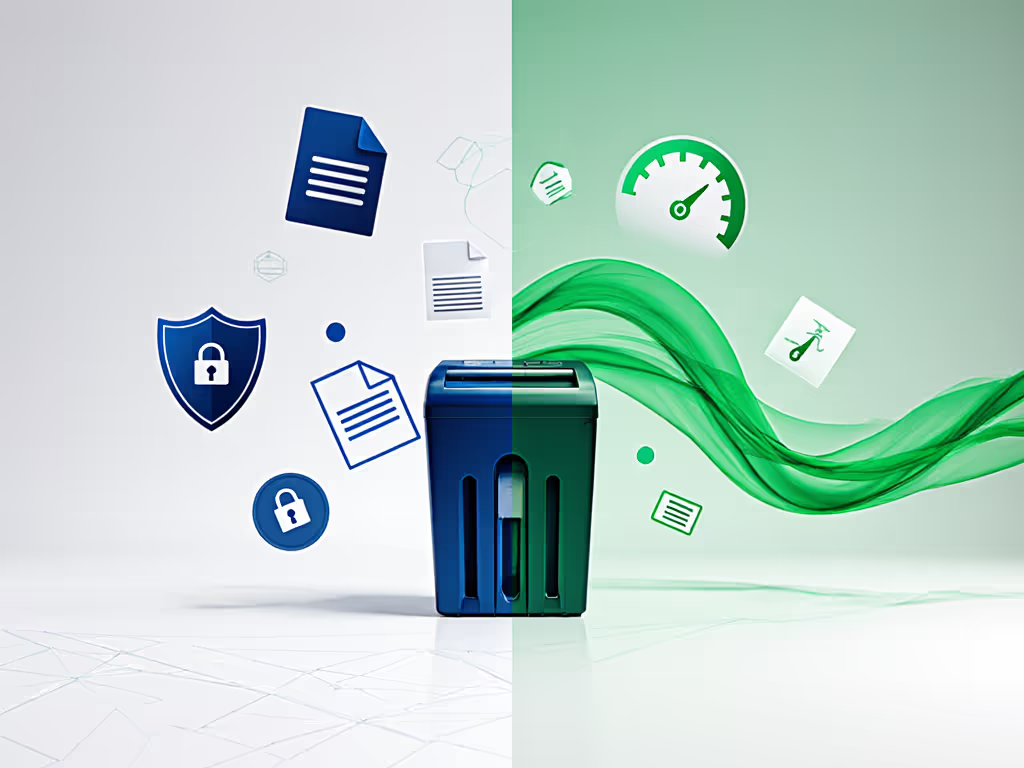
Related Articles

